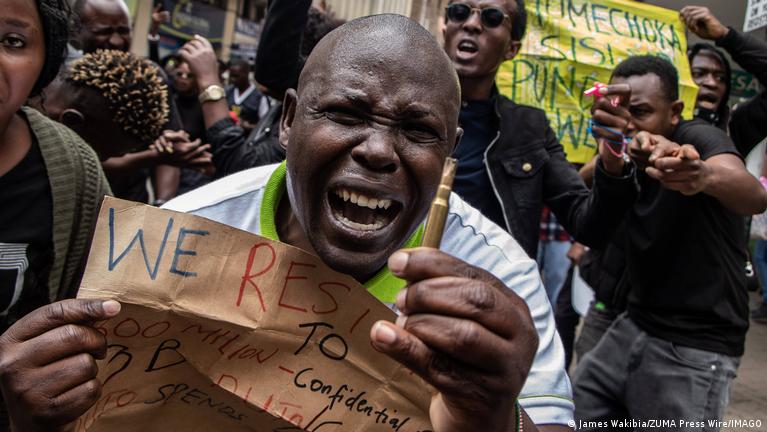AI Use Worries Kenyan Officials As Digital Tools Help Fuel Anger Against Government

Kenya’s government is on edge as youth-led agitation calling for the President’s resignation, initially sparked by the contentious Finance Bill 2024, gains momentum through a potent mix of homegrown artificial intelligence (AI) tools and social media. While the Finance Bill 2024, with its raft of unpopular tax hikes, may be gone, the anger it ignited continues to rage, fueled by digital tools, leaving the government scrambling to contain the fallout.
This concern was palpable in a communique sent to ambassadors in Nairobi by Kenya’s Foreign Affairs Cabinet Secretary Musalia Mudavadi on July 2nd. Mudavadi specifically flagged concerns about “AI use and misinformation,” echoing anxieties highlighted in the World Economic Forum’s Global Risks Report 2024.
The report, according to Mudavadi, pinpoints “misinformation and disinformation” as the biggest short-term global risk, “driven in large part by the potential of AI, in the hands of bad actors, to flood global information systems with false narratives.”
Kenyan youth, a significant portion of whom are tech-savvy millennials and Gen Z, have been at the forefront of the protests. They’ve created chatbots like the “Corrupt Politicians GPT” to expose graft, and the “Finance Bill GPT” to translate the bill’s complexities into actionable information for the public, as a report by Semafor highlights. These chatbots even share lawmakers’ phone numbers, enabling constituents to voice their concerns directly.
This digital activism comes despite Kenya’s ongoing development of a national AI strategy. The strategy is seen as a potential stepping stone for future AI regulations in the country.
Social media has served as the launchpad for these digital tools and protest organisation. Platforms like TikTok and X (formerly Twitter) were instrumental in mobilizing protests initially, while features like live streams and spaces continue to be used for coordination. Crowdfunding efforts via these platforms have helped raise money for medical bills and funeral costs of injured and deceased protestors.
The protests haven’t been limited to the well-trodden paths of established social media giants. Lesser-known apps like Zello, which transforms phones into walkie-talkies, have seen a surge in usage, aiding rapid information sharing amongst protestors, including crucial updates on police movements.
Protestors also collaborated on TikTok videos, translating and explaining the Finance Bill’s proposals in various local languages, ensuring wider reach, especially in rural areas. Sign language interpreters further amplified the message.
The impact of these digital tools cannot be overstated but it’s not only tech-savvy youth making contributions. The efforts of “boda boda” (motorcycle taxi) riders delivering supplies, graphic designers creating posters, and even medics organising free medical camps for protestors, haven’t gone unnoticed. The Law Society of Kenya (LSK) has also joined the fray, providing legal aid and challenging police brutality.
The Kenyan government’s concerns regarding AI and misinformation are not invalid. The potential for manipulation exists. However, the Kenyan case also showcases the immense power of digital tools in empowering citizens, fostering activism, and holding power to account. As Kenya witnesses this reality, the world watches, observing how this digital extension of the battle unfolds.
PS: It is also worth noting that President William Ruto, having walked back a number of proposals in response to the protests, might be coming to terms with the digital undercurrent of the grievances having himself engaged with over 130,000 citizens on a session held on X’s live group audio platform X Spaces today, July 5th.
Featured Image Credits: James Wakibia/ZUMA Press Wire/IMAGO